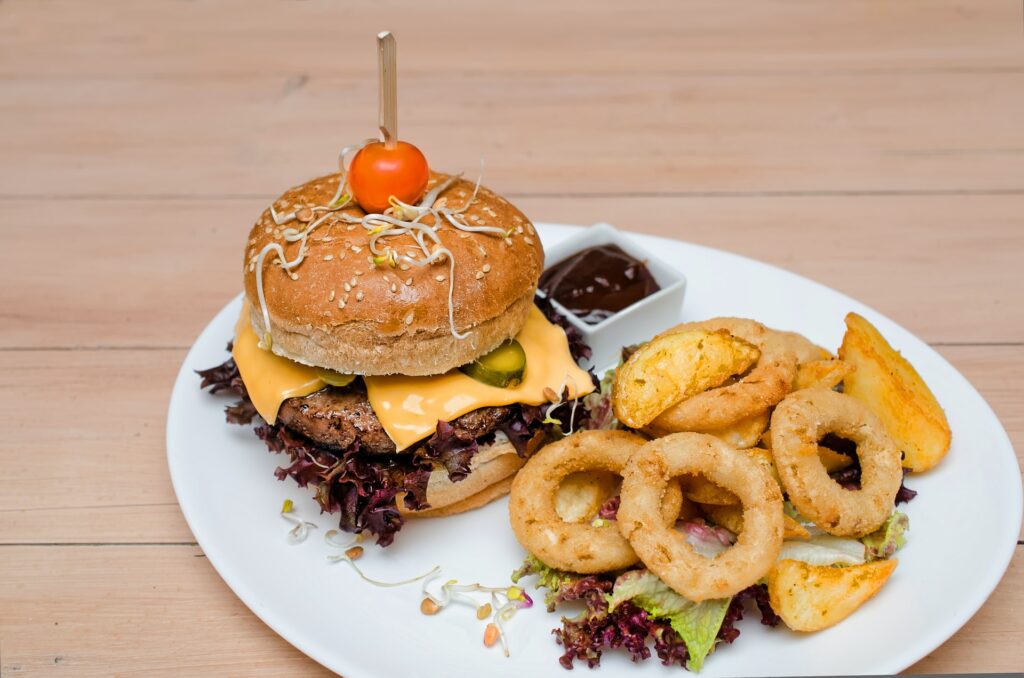
So, assuming that we do want to lead healthy lives, especially taking into consideration the food that we eat – We are what we eat! – there is no end to the information that is available for us to consider.
Unfortunately, try as we might, in the insanely controversial and seemingly always changing world that is health information, just trying to get some basic ideas and understanding for the best ways for us to take care of our overall health and wellness can leave us more confused and overwhelmed than we were when we first started to try and figure it out.
Information Overload
Every book, social media post and self-proclaimed “guru” related to health matters are quick to proclaim that their type of diet as the fountain of youth or that their workout program to be completely useful or the other useless.
To make things even more confusing, it can seem like the opinions from all of the different sources rarely agree with one another. We are left with no end of conflicting information about how we should best and ideally manage our health.
One of the primary examples of controversy that has started to settle down in more recent times yet still and often can remain a point of argument is the topic of dietary fats.
The Question Is: Are All Fats Bad For us?
Without a real understanding of how the body makes use of the things we eat, many people simply connect the dots, or put two and two together and assume that eating too much fat causes it to virtually bypass the part of the digestive process and the fats we eat are sent straight to the (insert common “problem” areas). Then, there are others that support a diet that consistent primarily of fats, claiming all sorts of health benefits of a strongly fat based diet.
Without taking one side or the other, for this conversation, the purpose of this article is to provide some information about dietary fats and differentiate between the forms that are inarguably beneficial and those that are less than optimal for your health.
First and foremost, fat is a necessary and irreplaceable part of the human diet. In order to carry out a long list of vital functions, including the production of essential hormones, the body must utilize dietary fats. This is an important piece of information that need to be reinforced before differentiating between types of fat.
The “Good” Fats
There are two forms of fat, according to the general consensus among health-care professionals, that are considered to be beneficial to your health.
Thee “Good” Fats Include
- Mono-Unsaturated Fats
- Polyunsaturated Fats.
Unsurprisingly, the most abundant sources that these type of fats are available are from nuts, seeds, vegetables, and fish. Notice that none of these sources included anything that is readily available at a drive-thru window or from most of the foods we eat that come out of a package.
The term “unsaturated” simply means that a molecule has a double bond somewhere in its molecular structure. Simply put, what this means to us is that these types of molecules are broken down easier inside our body.
TIP: When attempting to select these “good” fats, it is important to remember that they are almost always liquid at room temperature.
When consumed in the recommended quantities, these two types of fat are known to support many bodily processes such as the cardiovascular system, nerve and muscle function and reinforcing the membranes surrounding the cells.
- Fat is required for our body to be able to absorb fat-soluble vitamins A, D, E and K. Having a “real” vegetable salad with a little bit of a fat-based salad dressing can increase the absorption of nutrients compared with a fat-free dressing.
- It takes longer for our body to digest fats, especially when compared to the digestion of carbs. Eating the correct amount of the good fat foods can lead to feeling full and satiated with a properly portioned meal. If you pay attention to your body, this should mean that you eat less.
- Unsaturated fats that are typically found in plant and fish foods, like olive oil, nuts, and salmon, are considered to be anti-inflammatory.
- Omega-3 fatty acids that are typically found in flax seeds, chia seeds, fish, and algae are good for our cardiovascular health.
The “Bad” Fats
The two types of dietary fat that constitute the “bad” fats somewhat differ in just how bad they are for your health. In this category we have trans-fat and saturated fat. To clarify just how significant these two categories differ in severity, we will discuss trans-fat first.
For starters, trans-fat is so bad for the body that it is literally banned from all food products in the United States. Simply put, trans-fats have zero nutritional benefit. This type of fat came into existence when food distributors realized that turning certain oils, which are basically the healthy fats that we previously discussed, into solids that drastically increased their shelf life, making them much more resistant to spoiling.
Basically, trans-fats are used as a preservative. It probably isn’t shocking that trans-fats have been linked to an enormous number of health problems, heart disease and diabetes to name just two.
While saturated fats do not boast any research proclaiming their health benefits, they also are not known to carry near the risks of trans fat. Saturated fats make up a large portion of the western diet, and are present in things like bacon grease.
Although you shouldn’t avoid them at all costs, a diet rich in saturated fat is known to increase LDL – Low-Density Lipoprotein. LDL – is the bad form of cholesterol that is known to drive up the risk of heart disease as it takes takes cholesterol to your arteries, where it may collect in artery walls.
Saturated fats, when only allowed to make up a small portion of your diet, can be relatively benign.
FYI: The “Good” cholesterol is HDL cholesterol – High-Density Lipoprotein. HDL is considered to be “the good cholesterol” because it moves cholesterol to your liver to be expelled from your body.
The Ugly
By ugly we are not at all referring to how someone looks – on the outside. We do, however, mean the ugly that we cannot see on the inside of our bodies.
If we do not eat right and take care of ourselves, we turn our insides into a big ugly mess. If you need to you can search online for pictures of the differences between how healthy internal organs of our body look like and what unhealthy organs look like.
Our organs may not be so pretty to look at even if they are healthy, but there should be no-doubt that unhealthy organs definitely look and are very ugly when compared to how their healthy versions should look like.
Many of us spend so much of our day taking care of how we look on the outside. Isn’t it time that you take care of “The Ugly” that is on the inside of your body?
Conclusion
For our bodies to function as well as they can, we do require amounts of the good fats in our diet.
The obvious trick is that you need to know and be aware of which fats, in the proper proportions are okay and even good for you to eat.
The good fats include mono-unsaturated and polyunsaturated fats. Do your best to eat the right amounts of these fats on a daily basis.
The bad fats are trans-fat and saturated fats. Avoid trans fats like the plague.
For us men, our daily caloric intake varies with our age and how active, or not, that we are.
Above the age of 18, the estimated required calories per day for men ranges from 2000 to 3000 calories, with the total number of calories needed per day depending on a person’s age, sex, height, weight, and level of physical activity. As well, there are other factors that should be considered about caloric intake such as if there is a need to lose, maintain, or gain some weight.
For More Information About Maintaining A Good And Well-Balanced Diet
You can download a report from the U.S. Department of Agriculture and U.S. Department of Health and Human Services:
Dietary Guidelines for Americans, 2020-2025. 9th Edition. December 2020.
Available at: https://www.dietaryguidelines.gov/ .
Lowering bad fat from your diet will take an adjustment period. However, it is possible and it can be done, and yes, even by you. Start with making small changes as you go gradually implementing new changes to your diet. Over time you are bound to see good results from your efforts.
Pay attention to what you are eating, eat less of the bad foods and definitely, move around more.
Following healthy fat guidelines will allow you to lead a healthy life, live longer and do more and be more productive with your life.
For your own sake and for the sake of the people that we love, we owe it to ourselves to be the best that we can be. It really does not take that much effort other than being aware and making small changes to what we eat and moving more. You can do this.
Be A Man – Do The Right Thing. It’s Your Life. It’s Your Choice. Take Care Of Yourself. Eat Right And Exercise.
BAM!!! Be A Man! Do The Right Thing.
Be the DtRTy Guy!
Sources
1. https://www.google.com/search?client=firefox-b-1-d&q=good+fats+versus+bad+fats
2. https://www.hsph.harvard.edu/nutritionsource/what-should-you-eat/fats-and-cholesterol/
3. https://www.healthline.com/health/heart-disease/good-fats-vs-bad-fats
4. https://www.healthline.com/health/hdl-vs-ldl-cholesterol#hdl-vs-ldl
5. https://www.helpguide.org/articles/healthy-eating/choosing-healthy-fats.htm
6. https://www.health.harvard.edu/staying-healthy/the-truth-about-fats-bad-and-good
7. https://www.webmd.com/diet/obesity/features/skinny-fat-good-fats-bad-fats#1
8. https://www.mayoclinic.org/healthy-lifestyle/nutrition-and-healthy-eating/in-depth/fat/art-20045550
